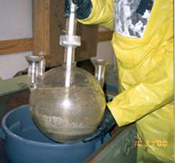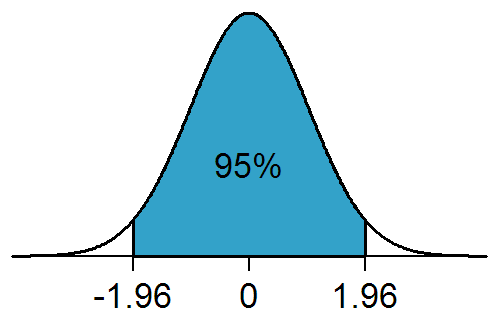|
Cathine
-norpseudoephedrine, also known as cathine and (+)-norpseudoephedrine, is a psychoactive drug of the phenethylamine and amphetamine chemical classes which acts as a stimulant. Along with cathinone, it is found naturally in ''Catha edulis'' (khat), and contributes to its overall effects. It has approximately 7-10% the potency of amphetamine. Pharmacology Like amphetamines, cathinone and ephedrine, cathine acts as a norepinephrine releasing agent (NRA). It also acts as a dopamine releasing agent (DRA). Chemistry Cathine is one of the four stereoisomers of phenylpropanolamine (PPA). Regulation The World Anti-Doping Agency's list of prohibited substances (used for the Olympic Games among other athletic events) bans cathine in concentrations of over 5 micrograms per milliliter in urine. Cathine is a Schedule III drug under the Convention on Psychotropic Substances. In the United States, it is classified as a Schedule IV controlled substance. In Australia, Cathine is offi ... [...More Info...] [...Related Items...] OR: [Wikipedia] [Google] [Baidu] |
Cathinone
Cathinone (also known as benzoylethanamine, or β-keto-amphetamine) is a monoamine alkaloid found in the shrub ''Catha edulis'' (khat) and is chemically similar to ephedrine, cathine, methcathinone and other amphetamines. It is probably the main contributor to the stimulant effect of ''Catha edulis'', also known as khat. Cathinone differs from many other amphetamines in that it has a ketone functional group. Other phenethylamines that share this structure include the stimulants methcathinone, MDPV, mephedrone and the antidepressant bupropion. History Discovery Khat has been cultivated in the Horn of Africa and Arabian Peninsula region of the world for thousands of years. It is most commonly chewed for the euphoric effect it produces. The active ingredient was first proposed in 1930, when cathine was identified as a predominant alkaloid in the plant. Cathine was thought to be the main active ingredient in khat until the 1960s, when it was found that the amount of cathine ... [...More Info...] [...Related Items...] OR: [Wikipedia] [Google] [Baidu] |
Catha Edulis
Khat or qat ( ''ch’at''; Oromo: ''Jimaa'', so, qaad, khaad, khat or chat, ar, القات ''al-qāt'') is a flowering plant native to eastern and southern Africa. Khat contains the alkaloid cathinone, a stimulant, which is said to cause excitement, loss of appetite, and euphoria. Among communities from the areas where the plant is native, khat chewing has a history as a social custom dating back thousands of years analogous to the use of coca leaves in South America and betel nut in Asia. The World Health Organization (WHO) classified it in 1980 as a drug of abuse that can produce psychological dependence, although the WHO does not consider khat addiction to be a serious problem. The legality of khat varies by region. In many countries, khat might not be a specifically controlled substance but may nevertheless be illegal under more general laws. It is a specifically controlled substance in some countries including Canada, Germany, the United Kingdom, and the United States ... [...More Info...] [...Related Items...] OR: [Wikipedia] [Google] [Baidu] |
Phenylpropanolamine
Phenylpropanolamine (PPA) is a sympathomimetic agent which is used as a decongestant and appetite suppressant. It was commonly used in prescription and over-the-counter cough and cold preparations. In veterinary medicine, it is used to control urinary incontinence in dogs. Chemistry PPA is also known as β-hydroxyamphetamine, and is a member of the phenethylamine and amphetamine chemical classes. It is closely related to the cathinones (β-ketoamphetamines). The compound exists as four stereoisomers, which include ''d''- and ''l''-norephedrine and ''d''- and ''l''-norpseudoephedrine. ''d''-Norpseudoephedrine is also known as cathine, and is found naturally in ''Catha edulis'' ( khat). Pharmaceutical drug preparations of PPA have varied in their stereoisomer composition in different countries, which may explain differences in misuse and side effect profiles. Analogues of PPA include ephedrine, pseudoephedrine, amphetamine, methamphetamine, and cathinone. PP ... [...More Info...] [...Related Items...] OR: [Wikipedia] [Google] [Baidu] |
Convention On Psychotropic Substances
The Convention on Psychotropic Substances of 1971 is a United Nations treaty designed to control psychoactive drugs such as amphetamine-type stimulants, barbiturates, benzodiazepines, and psychedelics signed in Vienna, Austria on 21 February 1971. The Single Convention on Narcotic Drugs of 1961 did not ban the many newly discovered psychotropics, since its scope was limited to drugs with cannabis, coca and opium-like effects. During the 1960s such drugs became widely available, and government authorities opposed this for numerous reasons, arguing that along with negative health effects, drug use led to lowered moral standards. The Convention, which contains import and export restrictions and other rules aimed at limiting drug use to scientific and medical purposes, came into force on 16 August 1976. As of 2013, 183 member states are Parties to the treaty. Many laws have been passed to implement the Convention, including the Canadian Controlled Drugs and Substances Act, th ... [...More Info...] [...Related Items...] OR: [Wikipedia] [Google] [Baidu] |
Odds Ratio
An odds ratio (OR) is a statistic that quantifies the strength of the association between two events, A and B. The odds ratio is defined as the ratio of the odds of A in the presence of B and the odds of A in the absence of B, or equivalently (due to symmetry), the ratio of the odds of B in the presence of A and the odds of B in the absence of A. Two events are independent if and only if the OR equals 1, i.e., the odds of one event are the same in either the presence or absence of the other event. If the OR is greater than 1, then A and B are associated (correlated) in the sense that, compared to the absence of B, the presence of B raises the odds of A, and symmetrically the presence of A raises the odds of B. Conversely, if the OR is less than 1, then A and B are negatively correlated, and the presence of one event reduces the odds of the other event. Note that the odds ratio is symmetric in the two events, and there is no causal direction implied ( correlation does not imply c ... [...More Info...] [...Related Items...] OR: [Wikipedia] [Google] [Baidu] |
Statistical Association
In statistics, correlation or dependence is any statistical relationship, whether causal or not, between two random variables or bivariate data. Although in the broadest sense, "correlation" may indicate any type of association, in statistics it usually refers to the degree to which a pair of variables are '' linearly'' related. Familiar examples of dependent phenomena include the correlation between the height of parents and their offspring, and the correlation between the price of a good and the quantity the consumers are willing to purchase, as it is depicted in the so-called demand curve. Correlations are useful because they can indicate a predictive relationship that can be exploited in practice. For example, an electrical utility may produce less power on a mild day based on the correlation between electricity demand and weather. In this example, there is a causal relationship, because extreme weather causes people to use more electricity for heating or cooling. Howev ... [...More Info...] [...Related Items...] OR: [Wikipedia] [Google] [Baidu] |
Statistically Significant
In statistical hypothesis testing, a result has statistical significance when it is very unlikely to have occurred given the null hypothesis (simply by chance alone). More precisely, a study's defined significance level, denoted by \alpha, is the probability of the study rejecting the null hypothesis, given that the null hypothesis is true; and the ''p''-value of a result, ''p'', is the probability of obtaining a result at least as extreme, given that the null hypothesis is true. The result is statistically significant, by the standards of the study, when p \le \alpha. The significance level for a study is chosen before data collection, and is typically set to 5% or much lower—depending on the field of study. In any experiment or observation that involves drawing a sample from a population, there is always the possibility that an observed effect would have occurred due to sampling error alone. But if the ''p''-value of an observed effect is less than (or equal to) the significan ... [...More Info...] [...Related Items...] OR: [Wikipedia] [Google] [Baidu] |
Confidence Interval
In frequentist statistics, a confidence interval (CI) is a range of estimates for an unknown parameter. A confidence interval is computed at a designated ''confidence level''; the 95% confidence level is most common, but other levels, such as 90% or 99%, are sometimes used. The confidence level represents the long-run proportion of corresponding CIs that contain the true value of the parameter. For example, out of all intervals computed at the 95% level, 95% of them should contain the parameter's true value. Factors affecting the width of the CI include the sample size, the variability in the sample, and the confidence level. All else being the same, a larger sample produces a narrower confidence interval, greater variability in the sample produces a wider confidence interval, and a higher confidence level produces a wider confidence interval. Definition Let be a random sample from a probability distribution with statistical parameter , which is a quantity to be esti ... [...More Info...] [...Related Items...] OR: [Wikipedia] [Google] [Baidu] |
Urine
Urine is a liquid by-product of metabolism in humans and in many other animals. Urine flows from the kidneys through the ureters to the urinary bladder. Urination results in urine being excreted from the body through the urethra. Cellular metabolism generates many by-products that are rich in nitrogen and must be cleared from the bloodstream, such as urea, uric acid, and creatinine. These by-products are expelled from the body during urination, which is the primary method for excreting water-soluble chemicals from the body. A urinalysis can detect nitrogenous wastes of the mammalian body. Urine plays an important role in the earth's nitrogen cycle. In balanced ecosystems, urine fertilizes the soil and thus helps plants to grow. Therefore, urine can be used as a fertilizer. Some animals use it to mark their territories. Historically, aged or fermented urine (known as lant) was also used for gunpowder production, household cleaning, tanning of leather and dye ... [...More Info...] [...Related Items...] OR: [Wikipedia] [Google] [Baidu] |
Anencephaly
Anencephaly is the absence of a major portion of the brain, skull, and scalp that occurs during embryonic development. It is a cephalic disorder that results from a neural tube defect that occurs when the rostral (head) end of the neural tube fails to close, usually between the 23rd and 26th day following conception. Strictly speaking, the Greek term translates as "without a brain" (or totally lacking the inside part of the head), but it is accepted that children born with this disorder usually only lack a telencephalon, the largest part of the brain consisting mainly of the cerebral hemispheres, including the neocortex, which is responsible for cognition. The remaining structure is usually covered only by a thin layer of membrane—skin, bone, meninges, etc., are all lacking. With very few exceptions, infants with this disorder do not survive longer than a few hours or days after birth. Signs and symptoms The National Institute of Neurological Disorders and Stroke (NINDS) desc ... [...More Info...] [...Related Items...] OR: [Wikipedia] [Google] [Baidu] |
Ephedraceae
Ephedraceae is a family of gymnosperms belonging to Gnetophyta, it contains only a single extant genus, '' Ephedra'', as well as a number of extinct genera from the Early Cretaceous. Taxonomy File:Eamesia chinensis.png, '' Eamesia'' File:Chengia laxispicatagen.webp, ''Chengia'' File:Jianchangia verticillata.webp, ''Jianchangia'' * '' Ephedra'' L. Early Cretaceous-Recent * '' Leongathia'' V.A. Krassilov, D.L. Dilcher & J.G. Douglas 1998 Koonwarra fossil bed, Australia, Early Cretaceous (Aptian) * '' Jianchangia'' Yang, Wang and Ferguson, 2020 Jiufotang Formation, China, Early Cretaceous (Aptian) * '' Eamesia'' Yang, Lin and Ferguson, 2018 Yixian Formation The Yixian Formation (; formerly transcribed as Yihsien Formation) is a geological formation in Jinzhou, Liaoning, People's Republic of China, that spans the late Barremian and early Aptian stages of the Early Cretaceous. It is known for its ..., China, Early Cretaceous (Aptian) * '' Prognetella'' Krassilov et Bugdae ... [...More Info...] [...Related Items...] OR: [Wikipedia] [Google] [Baidu] |
Ephedra (medicine)
Ephedra is a medicinal preparation from the plant '' Ephedra sinica''. Several additional species belonging to the genus '' Ephedra'' have traditionally been used for a variety of medicinal purposes, and are a possible candidate for the soma plant of Indo-Iranian religion. It has been used in traditional Chinese medicine, in which it is referred to as Ma Huang, for more than 2,000 years. Native Americans and Mormon pioneers drank a tea brewed from other '' Ephedra'' species, called "Mormon tea" and "Indian tea". Dietary supplements containing ephedra alkaloids have been found to be unsafe, with reports of serious side effects and ephedra-related deaths. In response to accumulating evidence of adverse effects and deaths related to ephedra, the U.S. Food and Drug Administration (FDA) banned the sale of supplements containing ephedrine alkaloids in 2004. The ban was challenged in court by ephedra manufacturers, but ultimately upheld in 2006 by the U.S. Court of Appeals for the ... [...More Info...] [...Related Items...] OR: [Wikipedia] [Google] [Baidu] |





